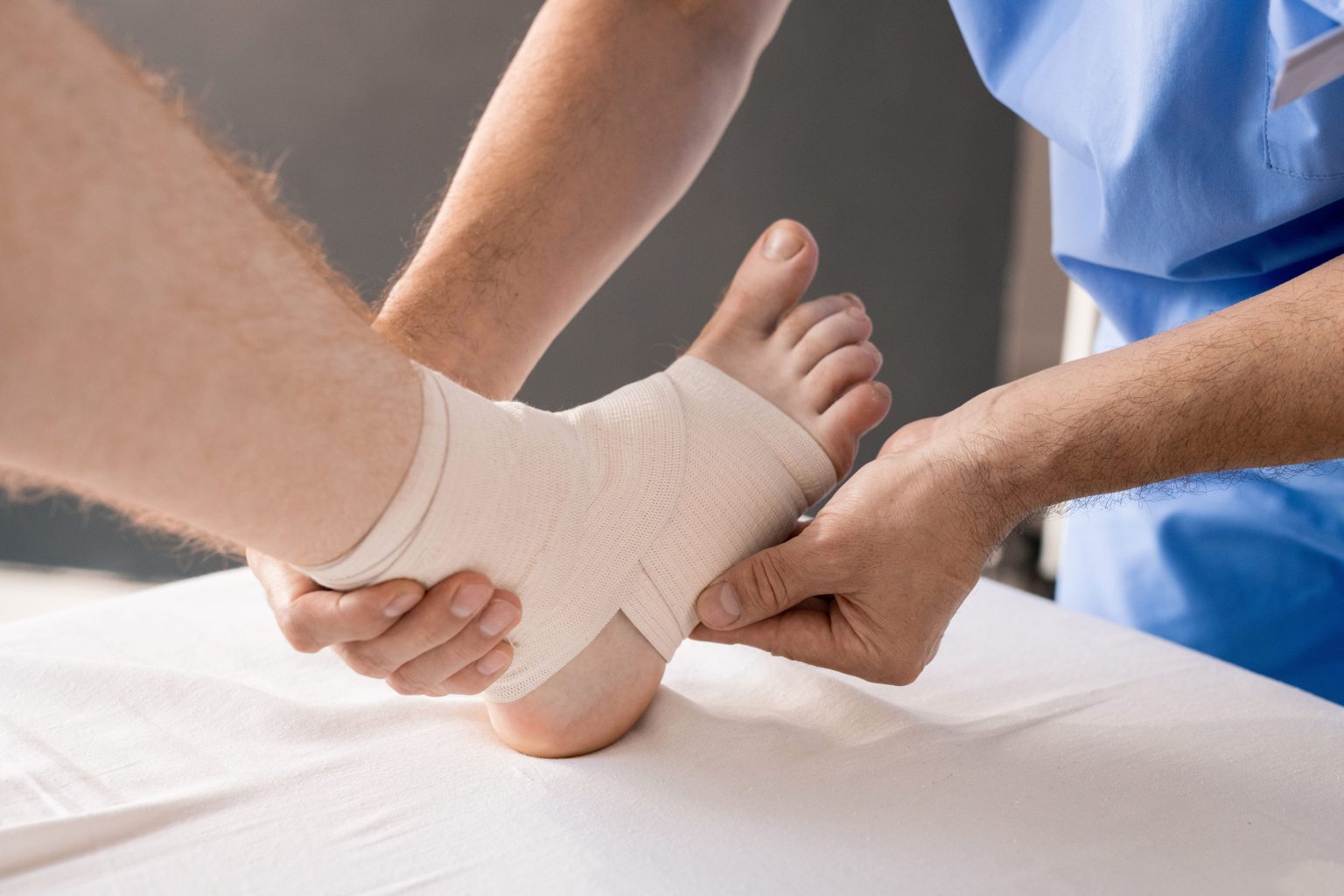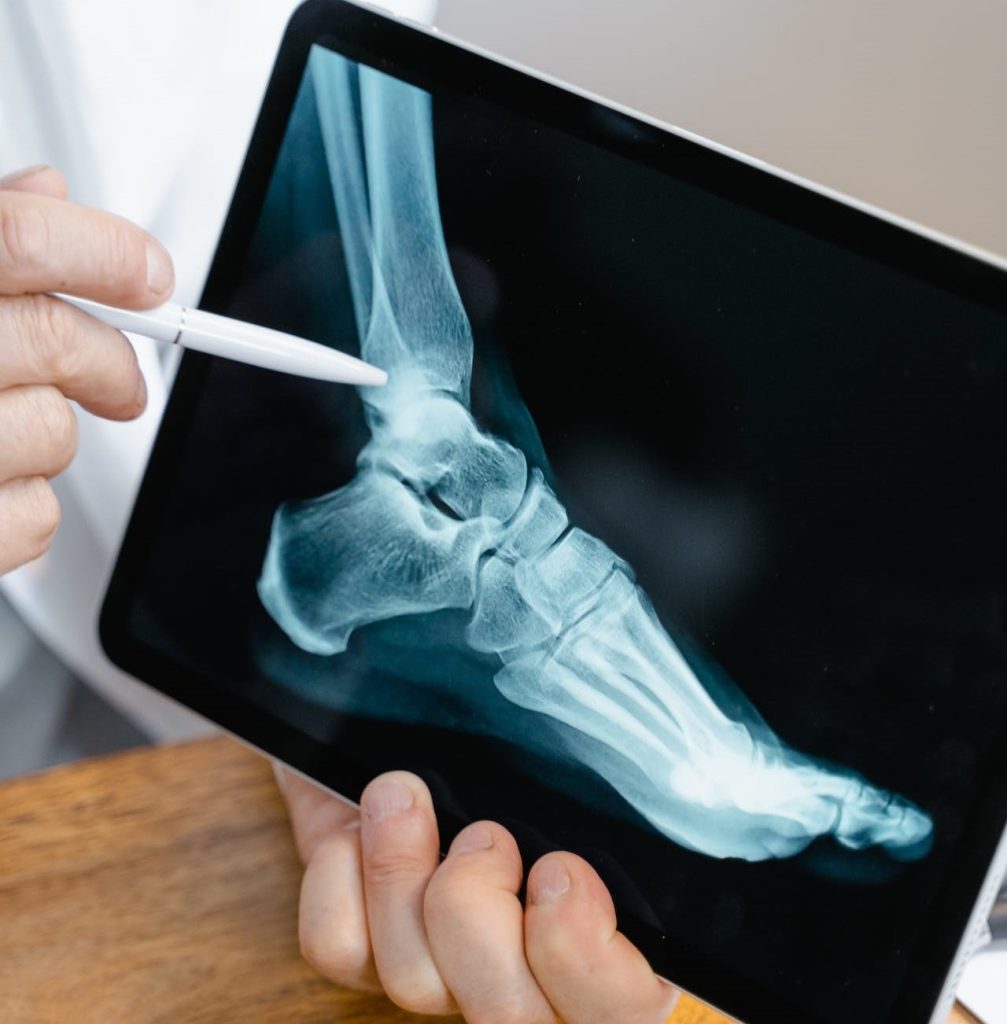SCHEDULE AN APPOINTMENT WITH US
Are Your Symptoms Affecting Your Quality Of Life?
Consult our MOH-accredited orthopaedic specialist for an accurate diagnosis & personalised treatment plan today.

MBBS (S’PORE)
MRCS (Ireland)
MMed (Ortho)
FRCSEd (Ortho)

An ankle fracture refers to a break in one or more of the bones that constitute the ankle joint, namely the tibia, fibula, and talus. These fractures can range from minor hairline fractures in the bone to severe comminuted fractures that disrupt the joint.
Syndesmotic injuries often occur alongside ankle fractures or independently, involving damage to the syndesmosis—a fibrous joint held together by ligaments. They typically result from high-ankle sprains, where the ligaments connecting the tibia to the fibula (lower leg bones) are stretched or torn.
Ankle fractures are categorised based on the specific bones involved and the break pattern. The common types include:


Various causes, often involving sudden or unnatural movements, can lead to ankle fractures and syndesmotic injuries. The primary causes include:
The symptoms of ankle fractures and syndesmotic injuries can vary depending on the severity and type of injury but typically include:
SCHEDULE AN APPOINTMENT WITH US
Consult our MOH-accredited orthopaedic specialist for an accurate diagnosis & personalised treatment plan today.
Diagnosing ankle fractures and syndesmotic injuries involves a combination of evaluation and imaging studies. The typical diagnostic process includes:


Non-surgical treatment may be appropriate for certain types of ankle fractures and syndesmotic injuries, especially those less severe or where the bones remain properly aligned. These options include:
Keeping the ankle immobile in a cast or splint allows the bones to heal naturally.
Applying ice and keeping the ankle elevated can help reduce swelling and pain.
Pain relievers and anti-inflammatory drugs can be used to manage pain and swelling.
After the initial healing phase, physical therapy is essential to restore strength, flexibility, and range of motion.
These may be used for additional support as the ankle heals.
Surgery may be necessary for more severe ankle fractures or syndesmotic injuries, particularly when there is significant displacement of the bones or instability of the ankle joint. Surgical options include:

MBBS (S’pore)
MRCS (Ireland)
MMed (Ortho)
FRCSEd (Ortho)
Dr Kau (许医生) is a Fellowship trained Orthopaedic Surgeon with a subspecialty interest in Hip and Knee surgery and has been in practice for more than 15 years.
He is experienced in trauma and fracture management, sports injuries, and joint replacement surgery.
While not all ankle fractures and syndesmotic injuries can be prevented, some strategies can help reduce the risk. These include:
For Singaporeans, Singapore Permanent Residents and Foreigners.
Please speak to our friendly clinic staff about using your insurance plans.

If you have any enquiry, please do get in touch. Leave us a message and we will get back to you shortly.
The healing time for an ankle fracture varies depending on its severity and type. Generally, it may take 6 to 12 weeks to heal sufficiently to allow weight-bearing activities.
Walking on a fractured ankle is not recommended as it can impede healing and potentially worsen the injury. To avoid putting weight on the injured ankle, crutches or a walker may be necessary.
Not all ankle fractures require surgery. Some fractures, particularly those where the bones are still properly aligned, can heal with non-surgical treatment methods like immobilisation and physical therapy.
The timing for returning to sports depends on the severity of the fracture and the treatment received. It is important to fully rehabilitate the ankle and gain medical clearance before resuming sports activities.